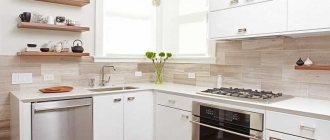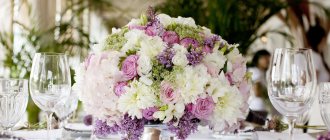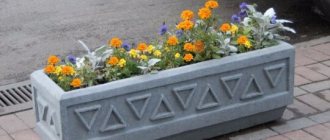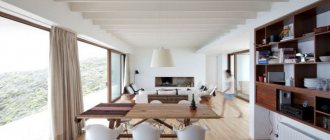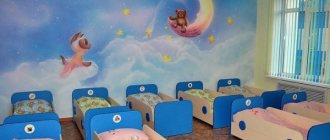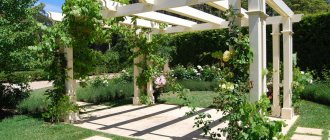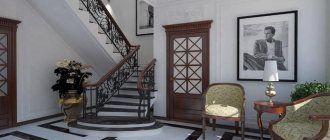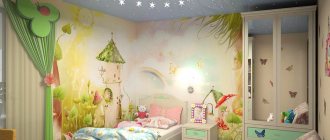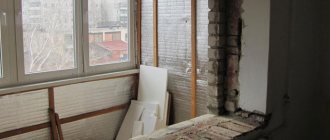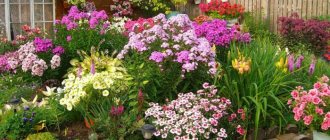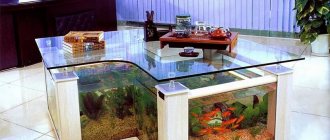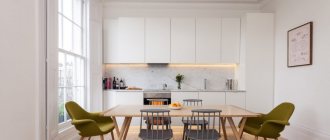Interior features in kindergarten
Decorating rooms for games and activities allows you to zoning the space and optimally use visual attributes in the process of raising and developing a child.
In addition to permanent corners with toys, construction sets and materials for manual labor, stands and shelves with children’s work are organized, which are periodically updated.
Thematic exhibitions with crafts and drawings complement the theme of the matinees; they can change in accordance with the seasons and holiday dates.
To create an exhibition board for drawings, the most suitable material is considered to be a lightweight cork sheet on which the paper can be fixed using buttons. It can be rectangular or with a curly cut.
The cork board is installed on a wooden, plastic or aluminum frame, which is firmly fixed to the wall. The surface of the stand can be painted or decorated with figures made of self-adhesive paper.
To create a display board, the content of which is updated daily, you can use a frame with stretched fabric, while the drawings are secured with safety pins.
Making your own passe-partout and special pockets for paper is an integral part of decorating corners in kindergarten.
The ability to abandon buttons and other metal fasteners will protect children and they will be able to change exhibits on their own.
To place bulky crafts, it is convenient to use narrow wall shelves. You can creatively add images of fairy-tale characters in poses supporting stands for figurines made by children into the background of the design.
Sun
The entrance from the reception to the group can be decorated with self-adhesive paper in the shape of a sun, under which you can write about the group, and then post a group (collective) photo. Also, an inscription with group age at the top would not hurt. The walls of the rooms can be decorated as you like.
Hang a soft toy sun above the front door. On the wall in the reception area or in the group there is a stand with useful, interesting information from the life of the group. The menu information block will allow parents to always be aware of their children’s diet. The average length and width of the stand is chosen so that all useful and interesting information can be placed, but at the same time the stand does not take up much space.
Paste photos of children in the nursery or preparatory group on the locker or other pieces of furniture, and in the reception room it will not be superfluous to order the sequential dressing of the kids (pictures or photo templates of clothes pasted on the board). Since a lot in such a process as setting up a group depends on stands, make a stand on which the children’s successes will be displayed. Give your stand a great design!
"Ladder pedagogy". Design of corridors, halls and staircases
Favzana Ayupova
"Ladder pedagogy". Design of corridors, halls and staircases
The environment is an important factor in the upbringing and development of a child. What interior items, the color of walls, stairs , paintings, photographs surround a child largely determine the formation of his aesthetic taste. If he is surrounded by warm, light tones, correctly selected harmonious colors, then he will learn to see and appreciate the beautiful and harmonious in his surroundings. Therefore, in our kindergarten we pay great attention to the design of not only groups and halls, but also halls , staircases , and corridors . So that they, as they say, “pleasant the eye”
, were functional and distinguished by high aesthetics.
Our garden is large, three-story, with 16 groups functioning in it. The groups are located in 4 halls and we call them by color: “green, blue, pink and lilac halls .”
Theoretical aspects of group design in accordance with Federal State Educational Standards
The design of a group in a kindergarten according to the Federal State Educational Standard should be aimed primarily at ensuring that the space helps the individual development of the child, taking into account the characteristics and interests of each pupil.
Design principles
When preparing for registration, the teacher must take into account the following principles:
The design should be flexible so that, if necessary, you can easily change elements (decorations, design objects, stands), adapting to the age and developmental characteristics of the group.
The environment in kindergarten should be comfortable for children and contribute to their development
In the younger group, the main thing is a safe design of the environment. Since at this age children are actively developing movements, but do not yet have sufficient coordination, it is better to use 2/3 of the room’s area for objects. At the age of 3–4 years, sensory development is actively underway; objects should be easy to understand and familiarize with, but at the same time differ in color, texture, and material (inserts, pyramids, lacing, boxes). Playing with sand and clay will help actively explore the world around you. Children in the younger group are attracted to drawing. At this age, wax pencils and finger paints are good for practicing.
In the middle group, role-playing games begin to predominate. The children develop their imagination to a greater extent, this helps them in implementing various game plans. Therefore, it will be useful to add attributes to the design of the environment that help develop the plot of the game (shop, doctor’s appointment, holidays). Dolls of various types and toys in the form of animals will help with this. Cognitive activity is activated in the middle group; in addition to getting acquainted with various materials (sand, wood, clay, water), you can conduct small experiments with them. The development of speech should be accompanied by a large number of books, pictures, as well as technical means (dictaphone, microphone, projector).
In the older group, the design of the zone becomes more complicated. More details are used that children at this age can distinguish. Additional material is added to the plot in games (more details of clothing, objects). The same applies to visual activities (markers, pencils). In addition to fiction, the book corner may contain reference materials and encyclopedias.
What zones can there be?
To create a favorable atmosphere in kindergarten for children, the teacher should consider the relevance and usefulness of the created zone (in accordance with the age of the children, their preferences, seasons, holidays). Depending on the conditions of the kindergarten and the age of the children, different zones or corners can be designed.
Reading corner
The reading area should be equipped with a children's library with selected books on the topic and current issues. It’s good if the kids can constantly have access to a literary corner: in their free time, look through books, various encyclopedias, and children’s magazines. The reading corner should be located next to a window for proper lighting and equipped with a table lamp for evening reading. It is best to change the composition of books every 2–2.5 weeks.
The literature presented must be appropriate to the age and preferences of the children.
A reading corner in kindergarten allows children to have constant access to books
In the first junior group, there should be 4-5 books in the reading corner (and the teacher should have additional copies of the same publications in stock). The following items are suitable:
The second junior group should also have access to 4–5 books:
In the middle group, it is necessary to display 5-6 books with fairy tales familiar to children in the reading area, the rest of the publications should be in the closet. The corner equipment includes:
The senior group should present 10–12 books. In addition to the corner attributes already added in the middle group, the following are entered:
In the preparatory group, books with humorous stories can be included in the reading area and the amount of educational materials (about animals, plants, which children are introduced to in class) can be increased.
Photo gallery: examples of designing a reading area in kindergarten
Creative zones
Creativity zones can be placed anywhere - near a window, in a closet, in the reception area. The arts corner will contain paints, albums, plasticine, coloring books, brushes, etc. The music corner can be well decorated with a variety of instruments, cassettes with songs, and portraits of composers. The theatrical area will feature various masks, costumes, fairy tale materials, and audio recordings.
Kindergarten design: 50 photo ideas
A preschool educational institution is an organization where primary public education of children is carried out, the first link of public education in most developed countries. Toddlers and older preschoolers are in kindergarten from about seven in the morning until five or seven in the evening, learning the minimum necessary communication skills, playing, and preparing for school. To prevent separation from parents for the whole day from being too traumatic for the baby, conditions similar to those at home are created in the preschool educational institution - an abundance of toys, friendly teachers, and the opportunity to sleep during the day. An important factor is the design of the kindergarten - beautiful, comfortable premises, safe areas.
Examples of group design
How the area in the kindergarten will be designed depends on its purpose.
For example, when decorating an artistic zone - a corner of artistic creativity - the following materials are used:
The art corner helps develop children's creative abilities and cultivates aesthetic taste.
When decorating a book corner, it is advisable to use:
Books should be changed depending on the topic being studied, relevance, and children’s interests (for example, according to the change of seasons, certain dates). It is optimal to install another material once every 2–2.5 weeks. In such a zone, a child in a calm environment will be able to study a book that interests him, chat with it longer, and look at the illustrations.
The reading corner displays books for various purposes.
The ecological corner teaches children to love nature and increases their knowledge about the environment. For zoning the following will be used:
It is necessary to instill in children a love of nature and respect for the environment.
Materials, finishing methods
Basic, most commonly used materials:
All materials must be harmless to children’s health and have radiation safety certificates. Ceilings are most often whitewashed and painted with water-based paint. The walls are made smooth so that they are easy to clean, and the floors are not slippery. The walls, floors of sanitary premises, catering units are decorated with tiles, oil paint, and decorative plaster. The floors in the groups are made of wood, laminated, natural linoleum, without cracks or protruding parts. In cold regions, heated floors are preferred. In groups, rugs and rugs are laid on the floor.
The furniture is also selected to be environmentally friendly, comfortable, and light. Preferably one that “grows with the child” - adjustable in height. It can be hard or soft.
Color palette
Rooms with windows facing north are painted in warm colors - beige, light yellow, orange-pink, peach. “Southern” rooms are decorated in cold colors – light blue, pale green, soft violet. Up to 25% of the area can be painted more brightly, but use a minimal amount of aggressive colors.
With the help of color, rooms are zoned - individual places are highlighted with bright colors and pictures.
How do different colors affect children?
Design of individual rooms or zoning
Zoning of space occurs by dividing it into functional zones with defining boundaries.
What are the boundaries?
Flexible zoning is preferred - prefabricated cabinet structures, sliding partitions, screens, transparent screens. Children often take a direct part in zoning, together with their teachers. Platform podiums with fences and various partitions are often used - straight, angular, curly, of various heights, widths, lengths. The decorative design of the ceiling on holidays will also become an element of division into zones - these are flags, balloons, paper garlands.
Senior groups are often located on the second floor, so the safety and aesthetic appearance of the stairs should also be taken care of. The walls along them should be beautifully decorated - for example, there should be an exhibition of graphic and painting works by students.
Play and study room
Most often, children play and eat in the same rooms. Furniture is selected according to the height of the children - in the younger and older groups it will vary greatly in height.
The walls are decorated with bright, non-aggressive wallpaper and drawings - developing stories, episodes from fairy tales and cartoons are welcome. In the play area, a soft, warm carpet is laid on the floor. Cabinets, racks for toys, books are selected with minimal risk of injury, are stable, and are well secured. The study area should be sufficiently well lit, visually separated from the play area by a different floor covering, walls, or with the help of partitions. Here children learn to read, write, draw, and sculpt. Zones of various games are separated from each other by decorative houses and screens - a kitchen with a toy set, a railway, a Lego town.
Dining area
The dining room is separated from the playing area by a screen and shelving. For ease of cleaning, do not place a carpet in this place, because children often drop food on the floor, spill it, and scatter it. The furniture here includes tables designed for two to four people, and chairs suitable for the height of the bench. On the wall there is a menu, an explanatory note, which describes and depicts how to properly use a spoon, fork, and napkins. The tables are covered with tablecloths and colorful oilcloths. Cartoon characters are often depicted on the walls eating.
Locker room
This is one of the first rooms where children and their parents find themselves when they come from the street. It is decorated brightly, a variety of subjects are used, wallpaper with images of animals and fairy-tale characters is used. Stands with important information, announcements, schedules, and height meters are placed on the walls. They draw on clothes lockers, stick different letters and pictures on them so that each child can easily remember his own and find where his things are. Long benches are placed in the center of the locker room so that the students can dress comfortably, and a carpet is laid on the floor.
Bedroom
The bedroom is intended for daytime sleep, night rest in the gardens with 24-hour stay. It is decorated in calm, mostly pastel, tones. Thick curtains are hung on the windows - the room should be darkened during the daytime rest. They are selected from natural, eco-friendly materials that suit the style. The structures to which they are attached must be highly reliable, and the fabrics must be practical and durable. You can simply whitewash the ceiling or depict a starry sky on it.
What should a bathroom be like?
Strict requirements are imposed on kindergarten bathrooms. Ceramic tiles are laid on the floor, which are easy to clean; on the walls, such covering should be at least one and a half meters high. In the younger groups, the toilet is equipped with pots, in the middle and older groups - with toilets, washbasins, and mirrors. The older the children, the more spacious this room should be. For older children, toilets are located in stalls, but the doors should not have locks. Each student has his own towel, which he hangs on a hook in a separate compartment. In the showers, drainage is provided through holes in the floor; for safety, rubber mats and wooden pallets are used.
Design implementation
Organizing a children's group is not an easy task. Thus, parents and educators should decorate the room so that the decorations carry not only aesthetic, but also semantic and developmental loads. There are certain photos that show what interesting designs you can come up with for groups.
Materials you will need:
- Paints;
- Applications;
- Pencils;
- Children's stickers;
- A1 format sheets;
- Sheets.
Procedure:
- First, you should divide (zone) the room into the following areas: work (for classes) and play areas. The work area for the nursery, as well as preparatory and other groups, needs to be arranged in different ways: it is worth setting up tables for older children, hanging a board in it, and then placing a cabinet with educational games, books, and materials for children. Make themed educational stands. Middle, junior, and senior groups will appreciate this.
- For a nursery, the play area of the rooms can accommodate soft children's furniture, including shelves with toys and cabinets. You can try to make themed corners like “Favorite toys”, “Visiting a fairy tale”, etc. Come up with a corner for girls with ready-made sets of toys. “Barbershop” or “Kitchen” may be useful in this capacity. For boys, organizing a workshop with sets of tools (toys) and cars is suitable. For the younger group, it is worth spending more time and doing something very interesting. The design should come out interesting.
- It is necessary to allocate a place for the “Magic Land of Creativity”. To do this, place construction sets and all kinds of sets for children's creativity, including puzzles. A shelf and stand for the exhibition of creative achievements of pupils is an important point in the design of a children's group.
- You can create a friendly atmosphere for the younger group using images of your favorite cartoon characters, fairy-tale characters, flowers, animals, etc. It is worth noting that the color scheme should be bright and colorful, but at the same time, not too irritating.
- Several stands for children from nursery, preparatory and other kindergarten groups, as well as their parents, would not hurt. The stands can display useful information regarding children’s nutrition, sports and creative achievements. Also, stands can cover the topic of psychology and general advice on raising children.
- Think about thematic design of the group. So, the group can be made in a single marine theme, as well as a fairy-tale or forest theme and combination. For boys from the older group, the pirate motif will be interesting. All theme templates can be found on the Internet.
Find out how to make a carousel with your own hands on our website! You will learn how to make an exciting attraction out of ordinary unnecessary tires in our article.
How to teach a child to be careful with nature? Our material posted at https://karuselkin.ru/detskaya-ploshhadka/iz-pokryshek-mozhno-sdelat-dazhe-kacheli/ link will tell you this.
Children are the most precious thing we have. Therefore, make as much effort and imagination as possible to ensure that little kindergarten students feel as comfortable as possible.
Decoration of children's playgrounds
There are two main zones on the territory of the kindergarten:
Experts recommend making playgrounds different - for children of different ages, their communication, games, and any events. The presence of natural areas is complemented by play elements made from natural materials. Also, convenient access to the territory of the preschool educational institution is provided, and the presence of short-term rest areas for adults who look after children is encouraged. Various techniques of modern landscape design are used.
On the site there are:
Some of the decor is easy to make with your own hands - animals from car tires, ladders from wooden slices, logs, miniature buildings from plywood, flower beds, alpine slides. Trees are made from colored plastic bottles, flower bed fences are made, paths are lined with pebbles painted to look like ladybugs and beetles. All decorative elements are painted with bright colors, and the walls of the kindergarten building are decorated with fairy-tale scenes.
Often the garden building has a gym or a swimming pool - children need to develop physically. The gym is equipped with a wall bars, balls, trampolines, basketball hoops, hoops, and skittles. The swimming pool must comply with safety standards, be equipped with life buoys, and be of shallow depth.
Group design tools
To make each area in the kindergarten look impressive and attractive, it is important to use suitable design tools. The more information is visible, the better. Therefore, it is good to use bright colors and compositions that catch the eye. For example, the title of an advertisement or the name of a stand should be written in capital letters. You can combine different colors and accompany the text with drawings. Children love to look at pictures on the walls and study details.
You can place interesting images of animals that will delight your students.
DIY stand
Making your own stand does not require large financial costs. The best materials would be plywood, cardboard and other durable materials that are covered with paper.
Stand design begins with choosing a suitable background. Its color should be harmoniously combined with the premises of the kindergarten and with future posted information. Letters for the title and subtitles are cut out of colored cardboard. Paints, felt-tip pens, drawings and photographs (all that is useful for colorful design) will also be useful. You can decorate the stand with any details: buttons, leaves, pieces of fabric, sparkles, etc.
Source
Creating a living corner
A living corner is a developmental area that teaches children the first skills of caring for animals and plants, allowing them to observe their behavior and development.
People most often living here are:
Various indoor plants in pots are often placed here - it is important to choose exclusively non-poisonous ones that cannot cause allergies or injure curious children with thorns or thorns. Children give animals food, clean cages under the supervision of adults, water flowers from watering cans, learning about the world of flora and fauna. All necessary equipment is stored here - children learn to use it.
All about decor and choice of textiles
Textiles are selected to match the overall color scheme. All fabrics are preferred natural, environmentally friendly, fireproof. Dust should not accumulate on them; bedding fabrics must not contain components that can cause allergies. High-quality textiles will not have to be changed after one or two years; they will not fade in the sun or lose their appearance. Pupils, together with adults, make crafts from fabrics, paintings, appliqués from felt on a linen base, sewn toys to decorate the head’s office. Themes and plots used are different.
Rag wall organizers for stationery and interior dolls will also decorate the interior of the room. In the bedroom there are decorative panels depicting sleeping animals, in the dining area there are textile paintings where cartoon characters eat and prepare food. Several textile tents are placed in the games room, in which some children can hide and retire if necessary.
Fabric pockets for a children's locker are easy to make yourself. To do this, you will need about a meter of fabric, from which two pieces 30 by 80 cm are cut, two pockets 40 by 20 cm and 40 by 15 cm. An elastic band is sewn into the upper parts of the pockets, on which they are slightly pulled together, sewn to the base one after the other, starting from the bottom. Afterwards the second part of the base is attached, a strip of plastic is inserted at the top and bottom for rigidity. The edges are decorated with bias tape and strips of the same fabric. Loops are sewn into the upper part on which the pockets will hang. They store spare panties, socks, gloves, a hat, a comb, and office supplies. If desired, the design is decorated with embroidery, applique, and beads.
